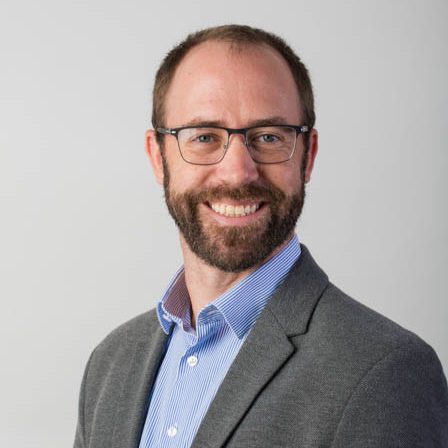
Seth Hopper, Ph.D.
Associate professor of physics, engineering and astronomy
Phone:765.973.2088
Email:[email protected]
Pronouns:He/him/his
Department: Physics and Astronomy
Program: Pre-Engineering
Location: Center for Science and Technology Room 206
801 National Road
Richmond, Indiana 47374
About me
I was born and raised in North Carolina. I came to Earlham as a student in 2000, joining my sister who was three years ahead of me. I graduated in 2004 with a double major in physics and computer science. Subsequently, I entered graduate school at University of North Carolina where I studied black holes. After finishing my Ph.D. in 2011, I took a series of postdoctoral research fellowships in Germany, Ireland and Portugal. I returned to Earlham to teach in 2017.
I enjoy playing Ultimate frisbee here on campus, taking walks with my dog, Echo, in Earlham’s back campus and singing karaoke in any appropriate location.
Helping students find their passions is a truly rewarding experience. I came to Earlham as a first-year without a clear goal but was inspired by my professors to pursue a career in academia. Now, I’m thrilled to have the opportunity to guide today’s students as they make similar discoveries.
Education
- Ph.D., University of North Carolna, Chapel Hill
- B.A., Earlham College
Research projects
Selected Works
Seth Hopper. “Unbound motion on a Schwarzschild background: Practical approaches to frequency domain computations.” Physical Review D, 97, 064007, March 2018.
Vitor Cardoso, Seth Hopper, Caio F. B. Macedo, Carlos Palenzuela, Paolo Pani. “Echoes of ECOs: gravitational-wave signatures of exotic compact objects and of quantum corrections at the horizon scale.” Physical Review D, 94, 084031, August 2016.
Seth Hopper, Chris Kavanagh, and Adrian Ottewill. “Analytic self-force calculations in the post-Newtonian regime: eccentric orbits on a Schwarzschild background.” Physical Review D, 93, 044010, February 2016.
Thibault Damour, Federico Guercilena, Ian Hinder, Seth Hopper, Alessandro Nagar, and Luciano Rezzolla. “Strong-Field Scattering of Two Black Holes: Numerics Versus Analytics.” Physical Review D, 89, 081503, June 2014.
Seth Hopper and Charles Evans. “Gravitational perturbations and metric reconstruction: Method of extended homogeneous solutions applied to eccentric orbits on a Schwarzschild black hole.” Physical Review D, 82, 084010, October 2010.
Scholarly interest
It’s an exciting time to be working in astronomy. The era of gravitational wave astronomy dawned on September 14, 2015, when two merging black holes were observed by the Laser Interferometer Gravitational-Wave Observatory (LIGO: ligo.org). It was the first direct evidence for the existence of both black holes and gravitational waves. The signal had been traveling toward Earth for billions of years when it was detected by the most sensitive instrument that humans have ever built. My research is one part of the large international effort to detect such gravitational radiation. Working with students, I perform simulations to model the radiation that is emitted by black hole systems. It’s challenging work that requires knowledge of physics, math, and computer science. It also demands collaboration with scientists from around the globe. The final results are fulfilling as we contribute to this research on the frontier of astronomy.